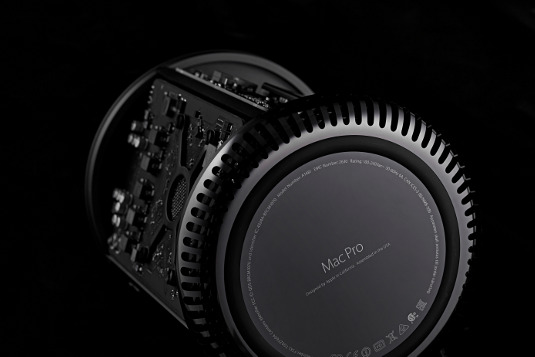What does 4K mean for you?
Rob Carney looks at what 4K technology could mean for you and your design business.
As a designer, motionographer, video editor, or in fact anyone in the creative industry, you're going to be hearing a lot about 4K over the course of 2014. But what is it, and what does it mean for you? Well, if you're a graphic designer or illustrator, it's unlikely to be impacting your workflow in the near future.
A bit of background: a resolution of 1080p (1920x1080 pixels) has been a standard for quite some time, and we're pretty used to it. It's the highest resolution on a 21.5in iMac and it's likely the resolution of your television at home. But 4K, as the name suggests, offers roughly four times the number of pixels. 4K itself is a rather generic term, describing content or display devices that have a horizontal resolution of around 4,000 pixels. In reality, as designers, you're likely to come across 4K Ultra HD - which is a resolution of 3840x2160 (twice 1080p resolution, with four times as many pixels).
Bigger, better, sharper
So what do we mean when we say it won't mean that much to you? Well, essentially you're going to be working on the same projects, the same images, the same graphics - but if you choose to invest in a 4K Ultra HD display you'll have a higher resolution - meaning you can focus on more detail. As a graphic designer or illustrator, a bigger monitor with a higher resolution is appealing, as is a higher pixel density for sharper text, more detail and better colour.
At the time of writing, simply plugging a new 4K monitor into your MacBook Pro isn't going to help you a great deal. Even though the 15in MacBook Pro with Retina Display, for instance, is capable of powering it, in heavy-duty apps you may experience lag because the MacBook Pro's connector doesn't support 60Hz. It's not particularly ideal, but these are current hardware limitations, that's all.
If you're serious about a 4K setup, at the very least you'll be buying a new graphics card for your desktop machine. More likely, you'll be upgrading to a Mac Pro (which can drive up to three 4K displays at once) - although this will bump up the cost of your workstation setup considerably.

For photographers, image-editing pros and those working on 4K stills, the benefits of the new technology are clear. But, at the moment, Adobe has yet to update the Photoshop interface to work at such high resolutions. The result is that interface elements, such as the icons at the bottom of the Layers panel, will get tiny. It's only a matter of time before more widespread adoption of 4K monitors forces the issue, though. In the meantime, you could opt for a dual monitor setup with your interface elements running on a lower-res screen.
It's also worth noting that as we go to press, the OS X Mavericks 10.9.3 beta appears to have built-in support that enables all compatible 4K displays to be set at a Retina resolution (which essentially looks like 1920x1080), with an option for 60Hz output. So that will make an enormous difference.
Daily design news, reviews, how-tos and more, as picked by the editors.
In terms of web design, yes, your visitors may have 4K screens, but is it worth the effort to update your bitmaps for that minority? It's a decision only you - or your clients - can make.
Clearly, where 4K really matters is in video and motion work. If you're involved in this industry it's very likely that you'll have crossed paths with 4K Ultra HD already. Being able to work on a dual, or even triple screen setup, all running at native 4K (if you have a Mac Pro driving the monitors at 60Hz) means, of course, you can edit in native resolution. After Effects, Premiere Pro and Final Cut all support the format. Companies like Red and Blackmagic have been producing 4K cameras for a while – and if your project requires, hiring one is an easy option (a Red camera costs over $31,000 to buy).
But when would your project call for it? At the moment broadcasters haven't yet adopted the technology and consumer uptake of devices is small. That said, shooting in 4K produces incredible image quality - the detail is staggering. So shooting in 4K and downscaling to 2K can produce downright beautiful footage. And remember, you can upload 4K footage to YouTube and Vimeo - although your audience won't reap all the benefits unless they're viewing on a 4K display.
It is, of course, a possibility that 4K will become as ubiquitous as 1080p HD, but this won't be for a while. For designers and illustrators, it's simply something to be aware of - and perhaps as simple, in the meantime, as a hardware upgrade choice. For motion designers and video editors it's undoubtedly a great way to shoot incredible footage and edit it natively, hardware dependent. But bear in mind that adoption by both clients and consumers is in its infancy.
This article originally appeared Computer Arts issue 226.
Illustration: Becca Allen

Rob is editorial, graphic design and publishing lead at Transport for London. He previously worked at Future Publishing over the course of several years, where he launched digital art magazine, ImagineFX; and edited graphic design magazine Computer Arts, as well as the Computer Arts Projects series, and was also editor of technology magazine, T3.
